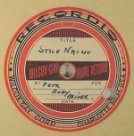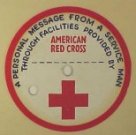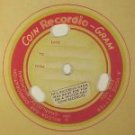Old Recordings Discs Tapes Wires Dictation Belts Other Media
| Light cardboard and heavy paper discs were coated with varnish
into which a spiral groove was cut by the inexpensive home, amusement
park and servicemen's club recorders of the late 1930s and 1940s.
Sizes range from 5 to 12". They were far better suited to speech than
music.


 These are the most time intensive old recordings to restore. They were cheaply made, usually poorly recorded and prone to considerable damage in storage and when being replayed. Surfaces craze, bend and tear and stick together. Either they play back just about perfectly, perhaps 10% of the time, or have such serious problems that they have to be tracked by hand, sometimes groove by groove, and be hand edited into a continuous program. This particular engineer carries the edits in his head and reassembles the record's continuity on a side-by-side basis, going back to the original while it is still on the turntable to try and pick up the occasional missed groove. Restoration of these is an all-or-nothing process with no intermediate engineering points. Loud bangs have to be taken out and background crackle reduced. This is not a job for the faint-of-heart at the workstation controls. Even so, unaccustomed listeners may not be happy with the unremovable surface noise. Yes, still more can can come out, but the distinctive quality of once-familiar voices is usually destroyed in the attempt. COSTS: To get tolerable sound back, the smaller ones require at least $ 100 per 2 minute side in the studio and, sometimes, more. Charges to restore the larger ones are proportional. COPYING. Recording your CD or cassette copy from the restored signal including assembling the selections into playing sequence is $ 30 for the first CD or cassette, $ 20 for each thereafter. A CD can hold about 35 two minute sides, 14 or so five minute sides.
This site ©2001 Steven Smolian. rev 1 |
